A J Hunting and Speedway
By R. Hillier - Librarian, State Library of Queensland | 19 December 2017
Albert John Hunting was an ideas man. The National Archives hold many of his patents and the list of the companies that he registered is lengthy. His business interests were incredibly varied, ranging from tourism to mining to professional sport to alternate fuels to war time weaponry to hexagonal houses. According to his family, the sound of him tapping out letters on his typewriter was a constant late night soundtrack in the Hunting house, and he obsessively jotted down thoughts and sketches on every piece of scrap paper he could get his hands on. However, first and foremost, he will always be remembered for what was no doubt his most commercially successful obsession: Speedway.
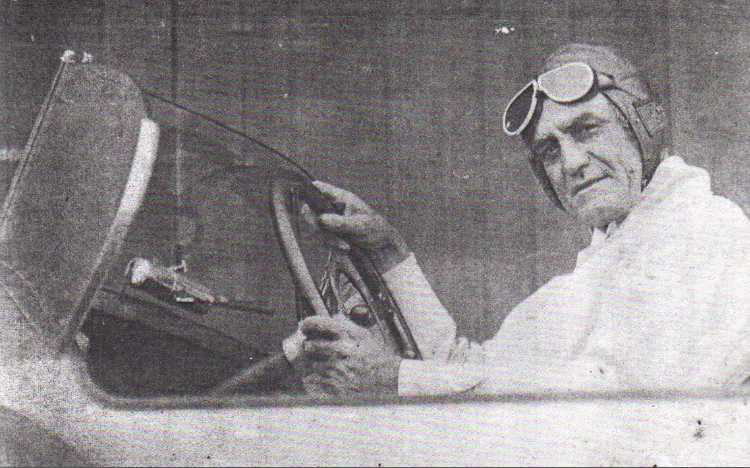
AJ Hunting ca. 1940s. Photograph from Worldwide Speedway Adventurer: The AJ Hunting Story by Tony Webb.
Hunting reached considerable fame in Brisbane in the late 1920s as a pioneering speedway promoter, but his first real involvement with racing was in Sydney. In 1923 he proposed constructing a purpose built concrete oval racing track at Maroubra which eventually opened in 1925 with an estimated 75 000 spectators in attendance. Despite hosting a number of successful car and motorbike events, Maroubra motordrome was short lived and reportedly very dangerous, with a number of racers losing their lives. By the time it closed in 1927, Hunting had already long moved on, having sold his share of the company and relocated to Brisbane.
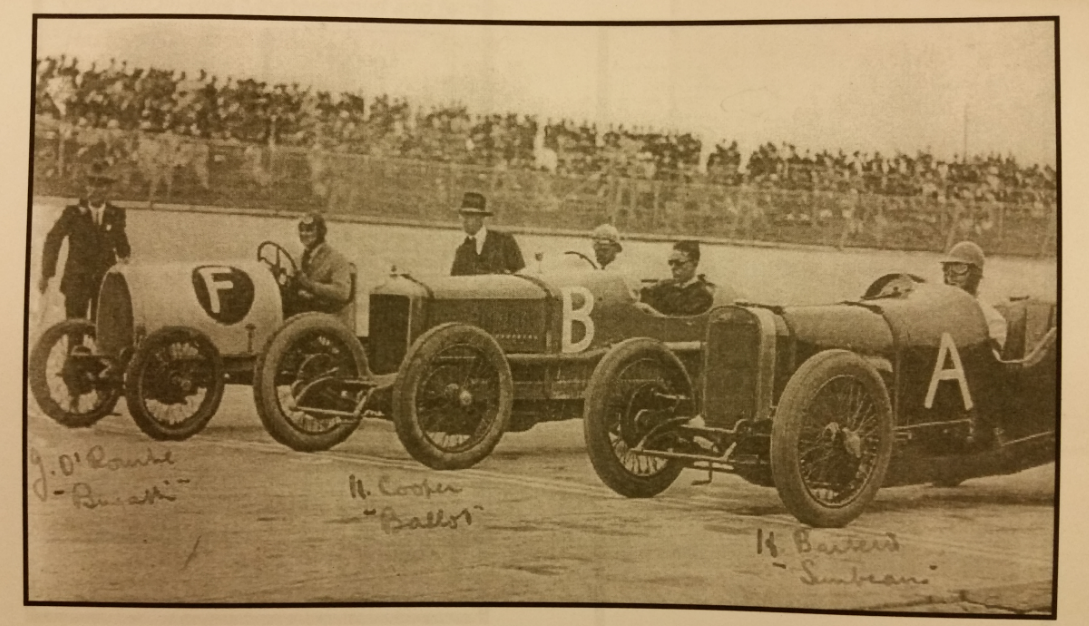
In Brisbane he found an established speedway network racing motorcycles on grass at Deagon – arguably the birthplace of Australian speedway. Capitalising on this, AJ initially planned on building a motordome, similar to Maroubra, at Oxley in Brisbane southern suburbs, however hold-ups lead to him taking up an option at the Exhibition Grounds. The Ekka Speedway opened in October 1926 and was instantly successful. After a disagreement in 1927, Hunting moved his speedway events to Davies Park, West End and it was at this venue that he truly pioneered modern speedway.
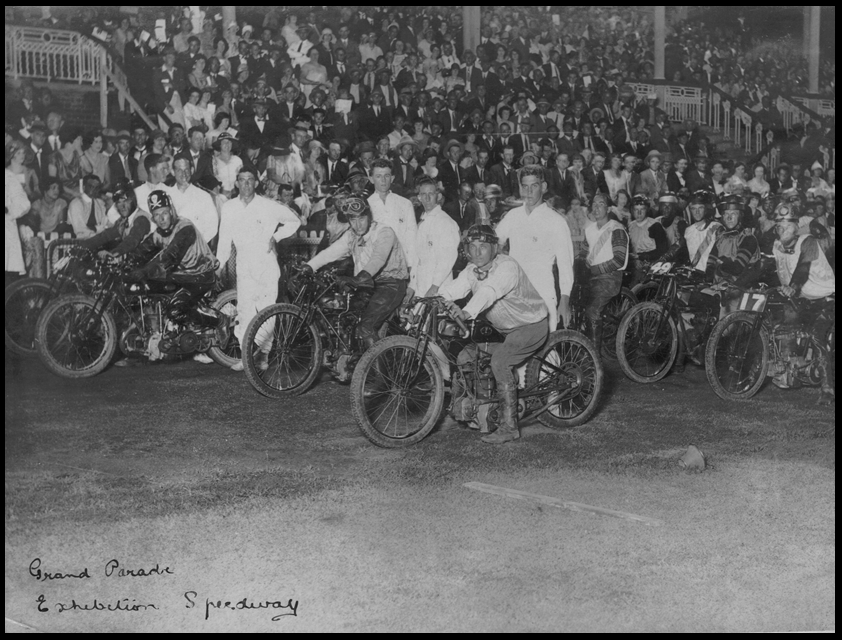
Davies Park boasted a round granite composite racing surface, floodlights and safety fences. Like the Ekka, the officials all wore white uniforms and the schedule adhered to a strict timetable. Hunting even financed a spur on the West End tram line to bring patrons into Davies Park. This was a very professional venture and proved hugely popular with the people of Brisbane. Hunting’s riders, such as Vic Huxley and Frank Arthur, rapidly became local heroes and household names.
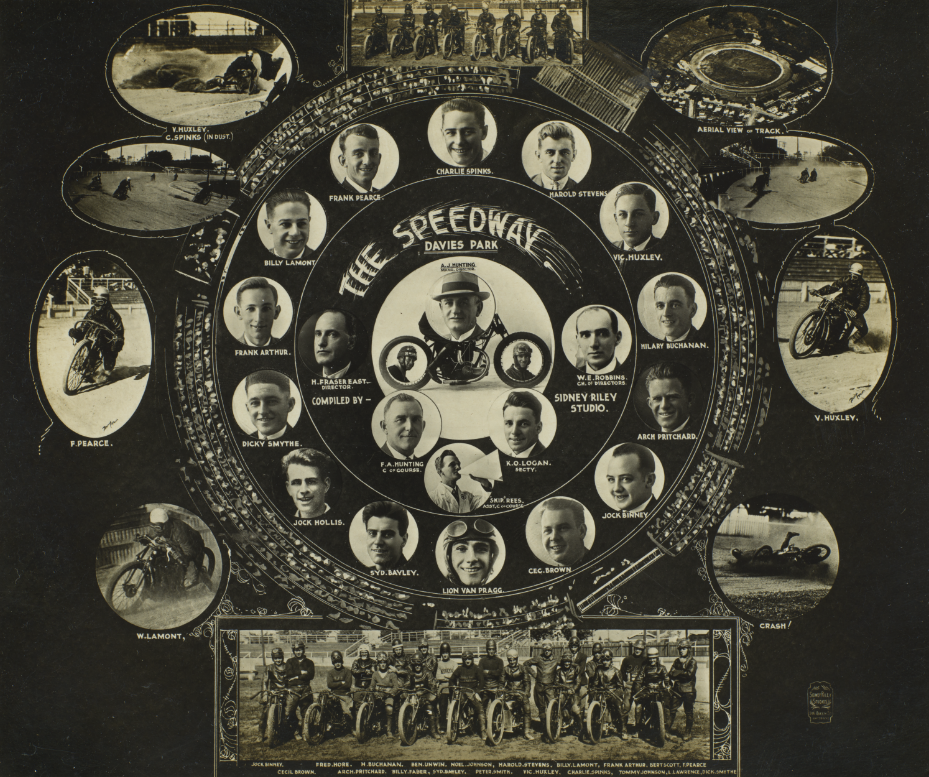
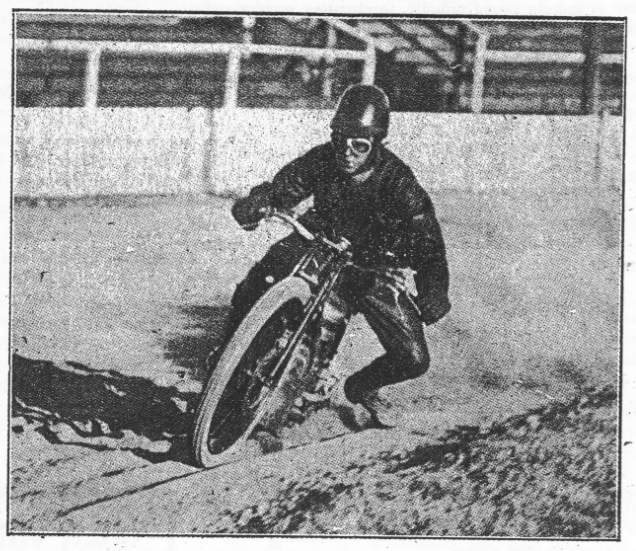
Hunting was a very savvy promoter and his ability to appeal to the masses lead to speedway becoming a truly successful spectacle. The golden helmet, silver gauntlet, silver sash and other such trophies were invented by Hunting and became instantly popular. The golden helmet is still used as a speedway trophy today.
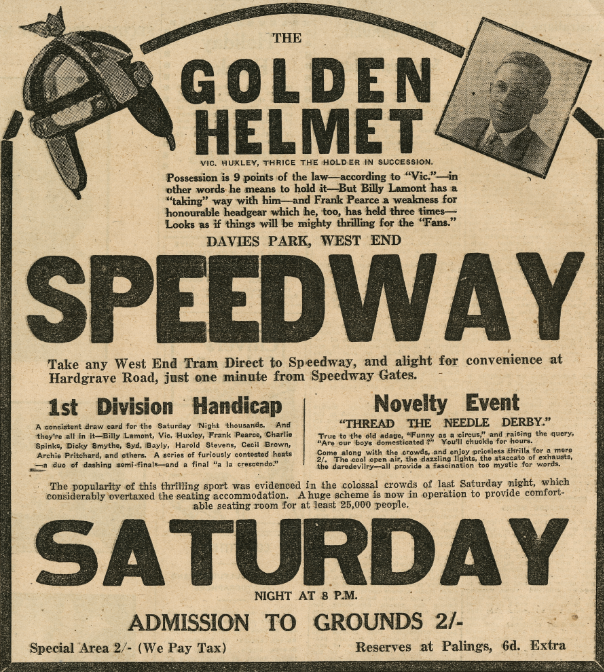
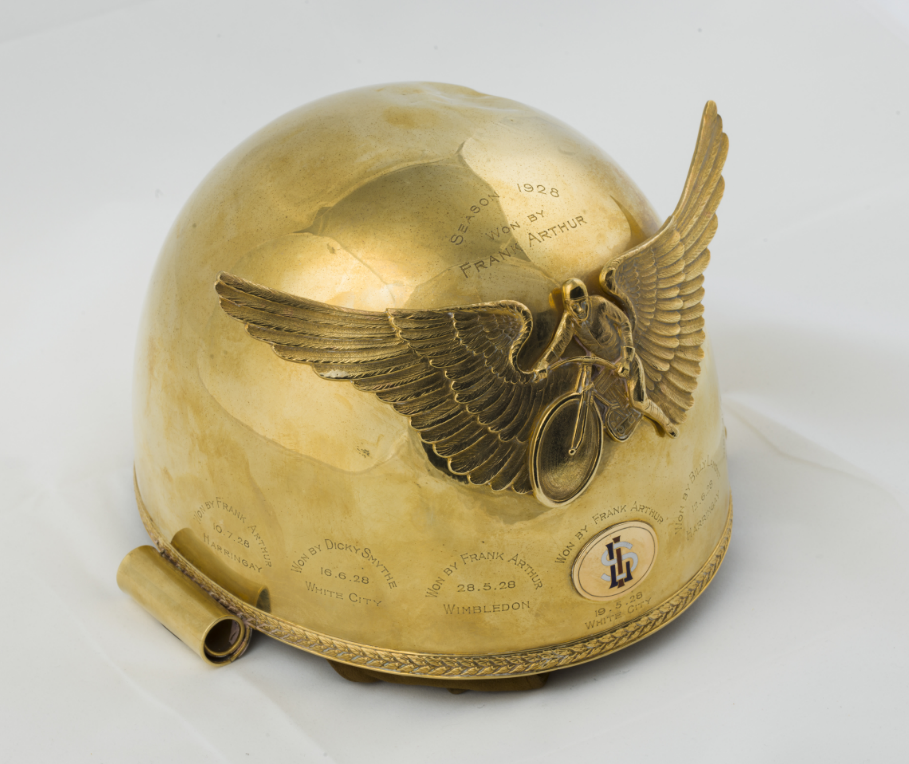
Not content with local success, Hunting took a team of his best riders and support staff to the UK in 1928, contributing greatly to the commercialisation of speedway there. He set up the White City London track and 7 others in the UK, followed by a track in Paris. He later established a number of tracks in South America.
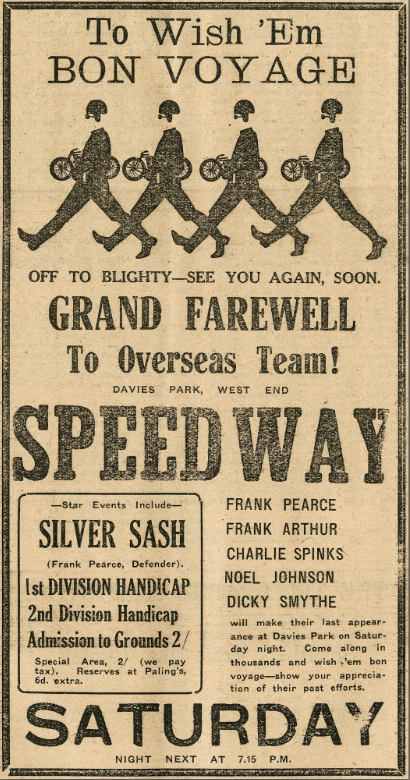
Always big on publicity, Hunting’s speedway programme The Speedway News was incorporated into a magazine containing speedway information and social columns. During the Davies Park era the magazine was called Town Topics. Among the staff that he took England were the editorial team for The Speedway News. The magazine quickly began publishing in the UK and stayed on there after AJ returned. It continued on to become the world’s premiere speedway magazine and, although it has been through a number of mergers, is still published today.
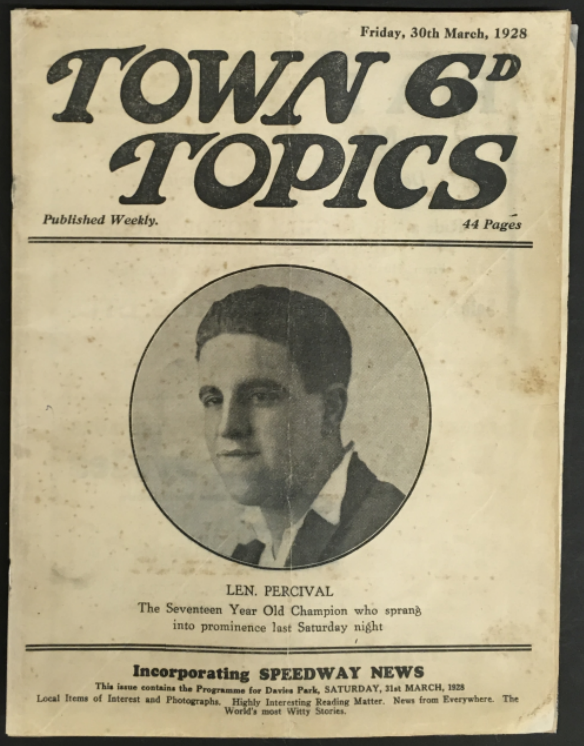
Back in Australia, Hunting continued with speedway at Davies Park. In 1930, the track hosted the world’s first Grand Prix, an event which continues in the same formula to this day and is staged in six countries around the world.
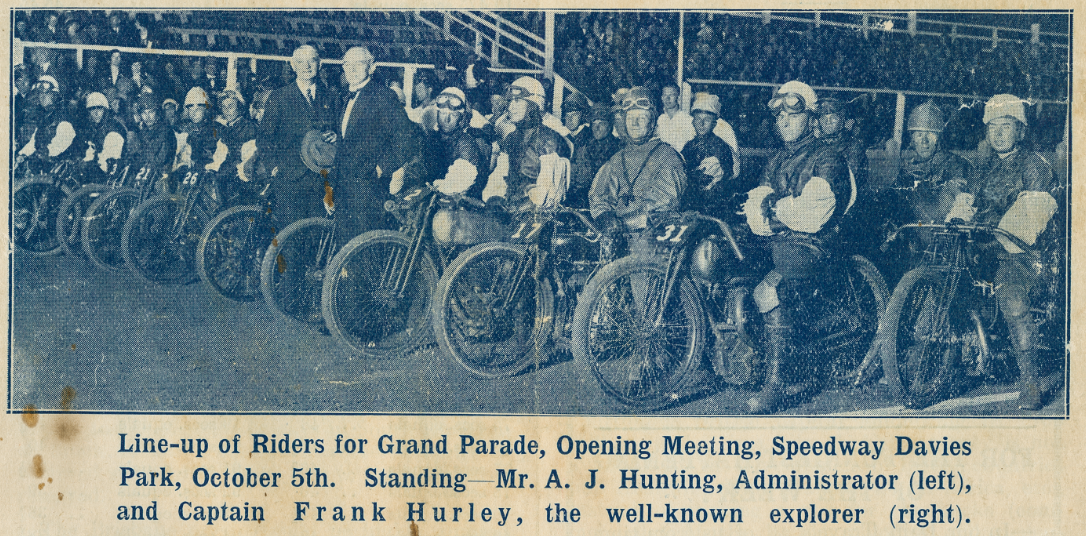
The later 1930s weren’t kind to Hunting’s speedway endeavours though. Davies park closed in 1932 suffering from adverse weather and the onset of the depression. AJ had another attempt in the late 1930s at speedway at the Ekka however it was shortlived. Although brief, AJ Hunting’s involvement with Speedway had a profound impact on the sport. The late 1920s and early 1930s saw him take what was an amateur annual meet in a paddock to the heights of international stardom. Hunting went on to many other pursuits before his death in 1946, however none topped the success he had with speedway.
R. Hillier - Librarian, State Library of Queensland
Video below: A. J. Hunting: The man who commercialised speedway in Australia, 2017, Sarah Scragg, John Oxley Library, State Library of Queensland.
A. J. Hunting: The man who commercialised speedway in Australia
Comments
Your email address will not be published.
We welcome relevant, respectful comments.